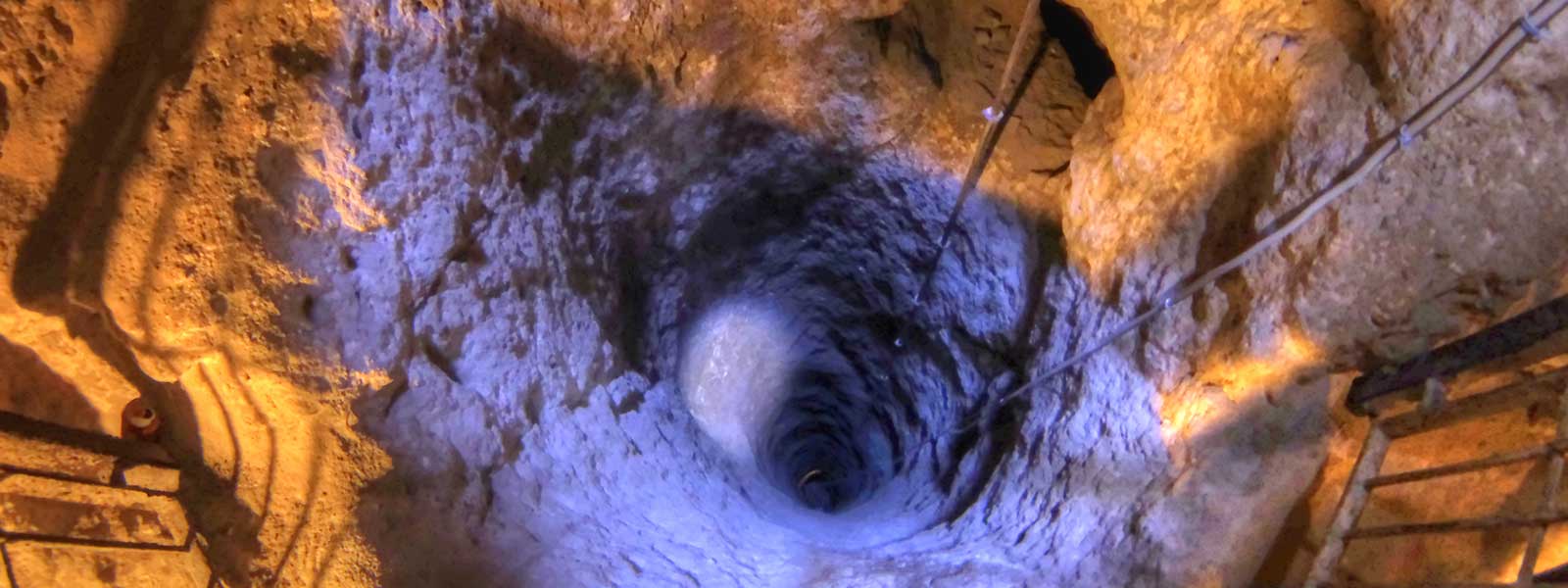
CAPPADOCIA UNDERGROUND CITIES
Anatolia, the historical intersection of civilizations throughout history, had forced its settlers Cappadocia to build massive underground cities - in the very center of Anatolia - and to find effective ways of protecting themselves from armies passing through in pursuit of power and glory. So, underground digging is the smart response of Cappadocian settlers against those invaders crossing the region from East to West or the other way around.
Underground caves in Cappadocia are carved out of unique geological formations. During the Persian Achaemenid Empire, they were used as a refugee settlement. Although there are about 40 different underground cities (containing a minimum of two levels) in the region. Kaymakli and Derinkuyu underground cities are two of the best examples of habitable underground structures. Kaymakli is the largest and Derinkuyu is the deepest. Besides numerous storage places, educational areas for kids, wineries, and kitchen, the ventilation shafts and millstone doors are worth seeing. Kaymakli is closer to the most favorite towns of the region and tunnels are wider. We recommend travelers to visit Derinkuyu only if Ihlara Valley is also within wishlist since it is 70 km away from the central Cappadocia.
Then who built these massive underground caves in Cappadocia?
Archaeology has no clear answer, yet. Probably the complex at Derinkuyu or at least a large section of it, already existed when the Christian migrants arrived and took possession of the excellent shelters, which they later enlarged. While the Phrygians are the prime suspects, as there are many Phrygian burial mounds in the region, the identity of the original builders of these great underground shelters is still not known for sure. As a result of the recent excavations in the region, cults belonging to Hittites have been discovered which raise the suspicions that the original constructors of the underground dwellings could be much older than the Phrygians. Researches are going on till we reach to clear archaeological proofs; the mystery upon the underground cities will endure. Who knows, maybe, their original builders might have sprung from Aladdin’s Lamp, excavated the enigmatic sites, then dissolved in thin air, without leaving behind either any record or artifacts, not even graves?
Mysteries of Cappadocia underground cities:
Already astonishing with their magnificent layouts, the underground complexes continue to amaze their visitor with the mystery behind their original builders. Burial sites and artifacts unearthed within and around the Derinkuyu and Kaymakli underground cities tend to support the hypothesis that some Christian settlements had already existed there during the first half of the 7th century. But why are there fundamental differences between these subterranean complexes and the troglodyte colonies in the Valley of Goreme then? Neither at the deepest nor the widest one, do we see decorations, only functional simplicity, which in fact could raise some doubt about any prolonged Christian occupation. Compared with the colorful frescoes of Goreme, the visitor cannot help wondering about the sad barrenness of underground cities in Cappadocia which apparently makes them different from the usual Christian settlements.
Conclusion
In a spectacular landscape dramatically demonstrating the ingenuity and creativity of its inhabitants, underground cities of Cappadocia provides a globally renowned and accessible display of landforms and man-made features, which are of great beauty, and which interact with the cultural elements of the landscape.
Please note that underground city visit is not recommended for travelers who have claustrophobia, asthma, heart disease, and high blood pressure.



